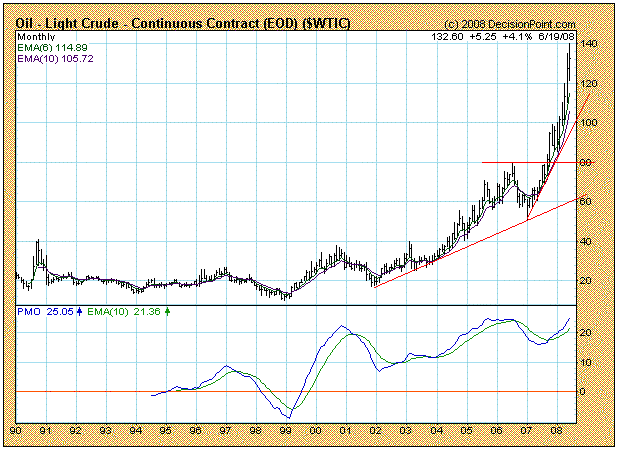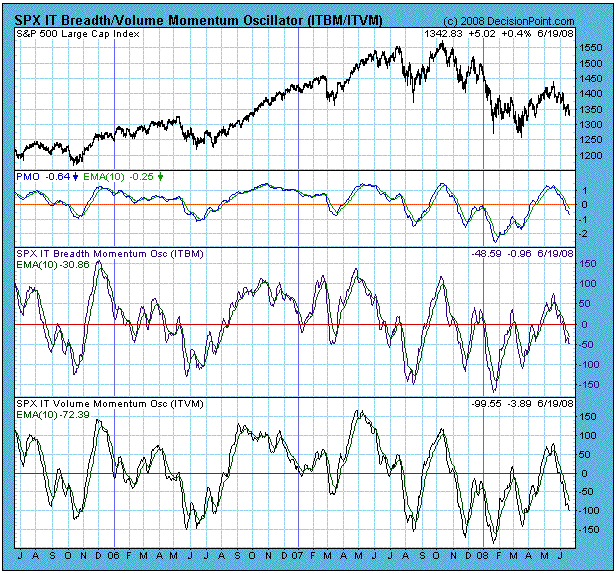Discussions about the price of oil are in the news every day, but my observation is that, for the most part, these discussions serve only to confuse the public more. Most popular are the conspiracy theories, blaming the high prices on shadowy behind-the-scenes manipulators. These theories have one purpose, which is to keep the public stirred up and in the dark. (Remember how mushrooms are grown.)
Most people don't understand the futures market at all. I am by no means an expert, but I have gleaned enough information recently that I think I can enlighten some of my readers. Futures markets exist primarily to serve the producers and consumers of commodities, who use futures contracts to hedge future prices of a given commodity. The producer wants to lock in a price that will ensure he covers his costs and makes a good profit. The consumer wants the same thing, and the object of both is to facilitate their business planning by having advance knowledge for what the price of the commodity will be when it is delivered in the future.
Those evil speculators, are actually necessary participants in the market who serve the purpose of market makers, and they take risks to do it.
While fundamentals play an important role in futures prices, human emotions are also a big part of the mix. Occasionally, like now, irrationality rules the day and a price bubble forms. The easiest way to tell that a bubble exists is to check the monthly-based chart for a parabolic formation. This is were prices move higher in an accelerating curve that eventually becomes vertical. On the chart below, you can see that this is the case with crude oil. This is a sure sign that prices are no longer connected to reality.
You will notice that just eighteen months ago oil was at $50/bbl. Now it is nearly three times that price. Have fundamentals changed so radically during that time? Of course not. The same kind of irrationally is at work in the oil market as we currently have in the housing bubble, and as we had in stocks in 2000.
The expansion in the number of oil mutual funds and ETFs has also placed a lot of demand for oil futures contracts. While this has helped drive prices higher, remember, it is a two-way street. When the parabolic finally breaks, there will be a stampede for the exits.
I can't guess how high oil prices will go, but eventually there will be a catalyst of some sort, and prices will fall almost vertically, quickly bringing oil prices back in to the realm of reality. The most obvious catalyst would be if congress lifted the ban on domestic drilling. While that doesn't sound likely now, the rising price of gasoline may eventually turn the screws enough to change some minds.
As for the stock market, the bear market clearly remains in effect. Our long-term sell signal has never wavered during the recent rally, but there were certainly plenty of plenty of positive signs (see my June 6 article) that suggested the bulls were about to take charge. One of the strongest signs was the price breakout above the declining tops line drawn from the bull market top. Obviously, this was a fakeout because prices failed to remain above support and are now headed for a retest of the March lows. Fakeout breakouts are common in bear markets -- I have identified two that occurred in 2001-2002.
The next chart shows our primary intermediate-term price, breadth, and volume indicators, which we use to determine the condition of the market. All are becoming oversold, but not so much so that there isn't room for further price decline. And, remember, in a bear market oversold conditions can mark the threshold for further price declines.
Bottom Line: Current high oil prices cannot and will not be sustained. Bubbles eventually burst, destroying all the foolish logic that said that prices would never go down again. I personally believe that, if congress lifts the drilling ban, oil prices will drop by about 50% within a few months of that action.
The stock market's bullish breakout has failed and prices are headed for a retest of the March lows. Bear market rules apply!









